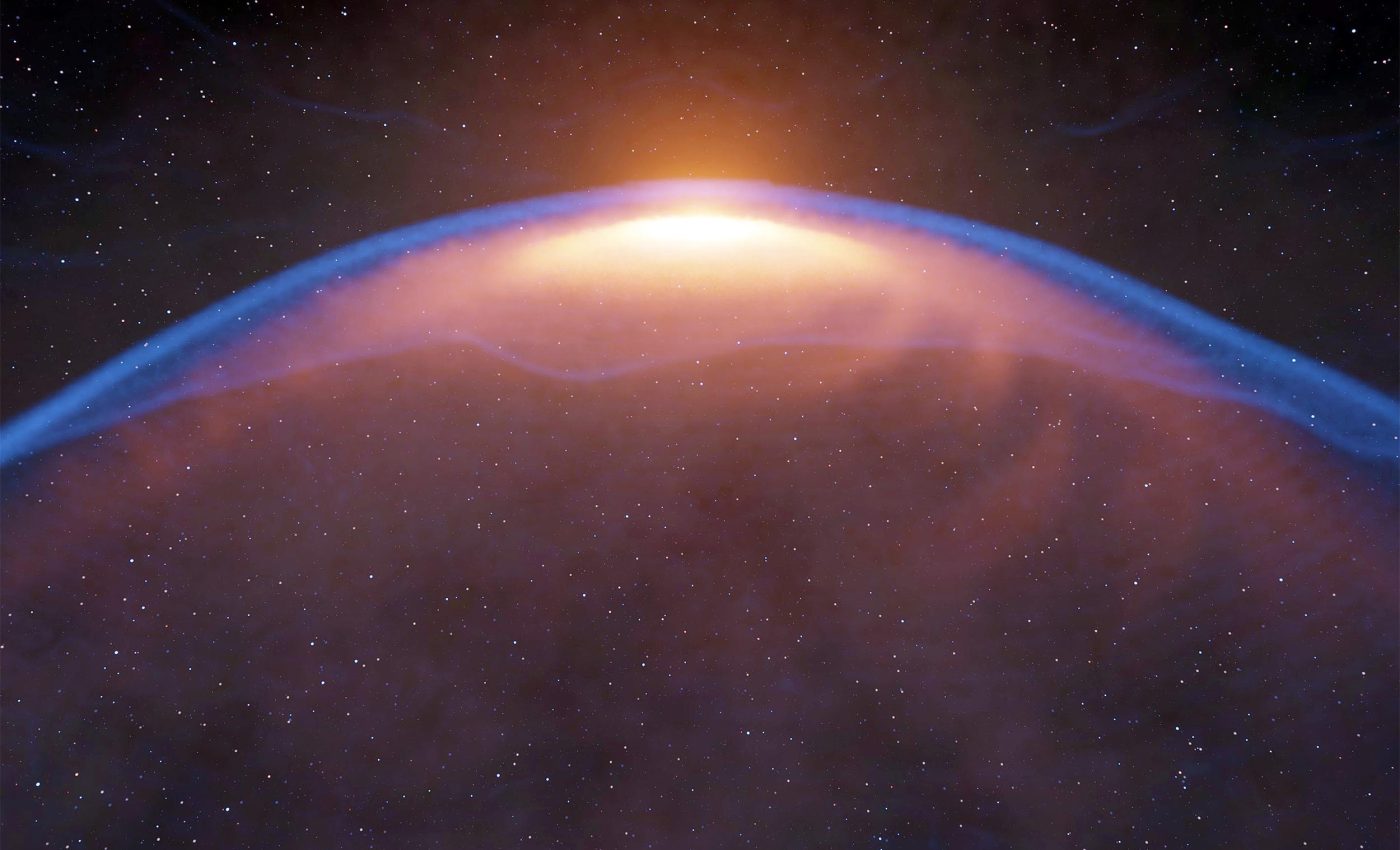
Baby star fires an explosive jet that crashed back into its own planetary disk
A baby star about 441 light years from Earth has set off an expanding bubble that is now barreling back into its own nursery. The smash up forces astronomers to rethink just how rough early planet forming environments can be.
The blast came from WSB 52, where a fast jet plowed into nearby gas and built a sphere of hot, high pressure material.
When that sphere pushed outward, it curled around and rammed the star’s thin protoplanetary disk, bending it like a flexed vinyl record.
How baby stars form
Masataka Aizawa of Ibaraki University led the analysis that uncovered the self-inflicted impact. He and colleagues spotted the aftermath while combing through routine archival files from ALMA.
Stars rise inside cold molecular cloud clumps that collapse under gravity, conserving spin and flattening into disks.
To keep growing, a star must shed excess angular momentum, and magnetically driven jets are the preferred escape valve.
Most studies treat that valve as a one way vent, but theorists have warned that returning material could pummel the disk and stir trouble. WSB 52 finally supplies the smoking gun.
WSB 52’s bubble rebound
ALMA’s radio images outline a roughly 750 au bubble around WSB 52, whose far wall is brighter where it plows into disk gas, a clear shock front.
That front curves toward the star, proving the bubble has looped around rather than racing off into space.
Computer fits by Aizawa’s group show the shell expanding at about 28,000 miles per hour, packing kinetic energy near ten quadrillion trillion ergs. Only a jet, observed in stellar toddlers, can deliver that punch so close to the rotation axis.
“In science fiction, there are scenes where a beam is fired at something to destroy it, causing an explosion with debris flying back at the shooter,” said Aizawa. He adds that nature easily outdoes those cinematic pyrotechnics.
Archival spectra hint that the jet fired a few hundred years ago, so the collision we witness now is a delayed echo of that outburst. That timescale means the damage unfolds well within the disk’s planet building era.
What the ALMA data revealed
Within the disk, gas velocities spike up to forty thousand miles per hour, in places fast enough to escape the star’s pull.
The patterns trace sweeping arcs that match the bubble’s curvature rather than the neat circles expected from undisturbed rotation.
Some of the displaced material even appears to be leaving the system entirely, hinting at premature disk thinning. That loss, if common, could rob growing planets of raw material and sculpt odd architectures.
Jets also heat dust grains as they slam through gas, potentially releasing water and organics that would otherwise stay locked in ice.
Such shock induced chemistry is a known feature of Herbig Haro bubbles like those around XZ Tau.
WSB 52 bubble collision lessons
Planet formation models often assume a placid disk where turbulence comes mainly from internal instabilities or magnetic stirring.
A bubbling blast adds sudden pressure spikes and jarring vertical motions that could fragment dust clumps or kick them outward.
Rocky cores might form faster if solid grains are lofted into cooler zones and collide more gently. Conversely, the same violence could toss volatiles away, drying out future terrestrial worlds.
Either way, the work underscores that local feedback, not just supernova shocks or stellar winds, can reshape planet nurseries.
The jet bubble pathway enlarges the list of physical processes that planet formation modelers must now consider.
XZ Tau shows a chain of bubbles that slowed and deformed over a decade of Hubble snapshots, suggesting similar boomerang dynamics. SVS 13 presents another case, with bubbles firing in multiple directions over several years.
Because bubbles fade quickly, astronomers may have missed many simply by looking at the wrong velocity slices. Machine learning tools that sift the ALMA archive for spherical shells could multiply the sample overnight.
More studies on baby stars
Future ALMA campaigns will hunt for rarer isotopes that trace mass and temperature, refining energy budgets and disk erosion rates.
The James Webb Space Telescope (JWST) can add infrared chemistry maps, revealing molecules released by the shock.
If such bubbles prove common, the traditional narrative of quiet, laminar disks will give way to one filled with ricochets.
Planet seekers may then look for scars, tilted rings, truncated outer zones, or chemical fingerprints, as relics of youthful fireworks.
Numerical models will have to combine magnetohydrodynamics, radiation, and dust evolution to capture the full cascade from jet launch to disk reshaping.
Only then can we measure how much rock, ice, and gas young planets lose to these spectacular ricochets.
The study is published in The Astrophysical Journal.
—–
Like what you read? Subscribe to our newsletter for engaging articles, exclusive content, and the latest updates.
Check us out on EarthSnap, a free app brought to you by Eric Ralls and Earth.com.
—–













